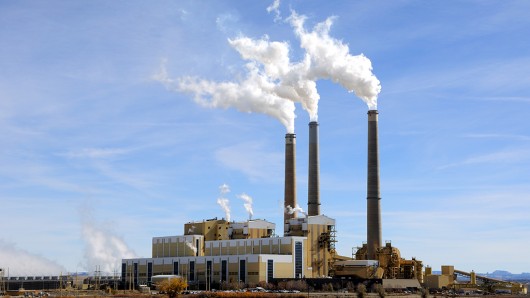
A new material called NOTT-300 could help reduce emissions from coal-fired power plants, such as this one in central Utah (Image: Shutterstock)
Researchers at the University of Nottingham have developed another weapon in the ongoing war to reduce the amount of greenhouse gases emitted from fossil fuel-burning power plants. The researchers have created a new porous material called NOTT-300 that they claim is cheaper and more efficient than existing materials at capturing polluting gases, such as carbon dioxide and sulfur dioxide, from flue gas.
While a wholesale switch from the burning of fossil fuels to greener alternatives such as solar, wind and wave power technologies would be the most environmentally friendly way to meet our ever-increasing demand for electricity, the simple fact is that the move will only be made incrementally. Carbon capture and sequestration is seen by many as one of the necessary steps on the road to a greener future, but current methods are expensive and consume large amounts of energy themselves.
The University of Nottingham researchers claim their NOTT-300 material offers a marked improvement over existing carbon capture methods that use a solvent that adsorbs CO2 and then releases water vapor to leave a concentrated stream of CO2 when heated. In comparison, NOTT-300 boasts a high uptake of CO2 and SO2 and releases the adsorbed gas chemicals through a simple reduction of pressure.
The material is also highly selective, with little or no adsorption into its pores of other gases, such as hydrogen, methane, nitrogen or oxygen. It also boasts high chemical stability to all common organic solvents and is stable in water at temperatures of up to 400° C (752° F). Additionally, as it is synthesized from cheap organic materials with water as the only solvent, it is cheap to produce.
“Our novel material has potential for applications in carbon capture technologies to reduce CO2 emissions and therefore contribute to the reduction of greenhouse gases in the atmosphere,” says Professor Martin Schröder, Dean of the Faculty of Science at The University of Nottingham. “It offers the opportunity for the development of an ‘easy on/easy off’ capture system that carries fewer economic and environmental penalties than existing technologies. It could also find application in gas separation processes where the removal of CO2 or acidic gases such as SO2 is required.”
The team’s research is published in the journal Nature Chemistry.
Source: University of Nottingham
Copyright © gizmag 2003 - 2012 To subscribe or visit go to: http://www.gizmag.com